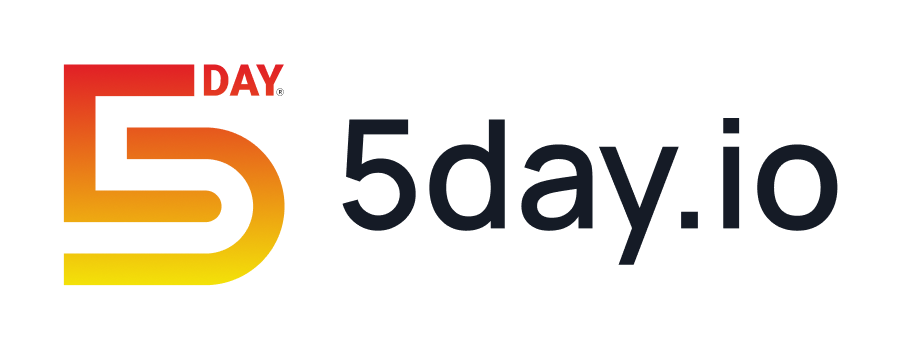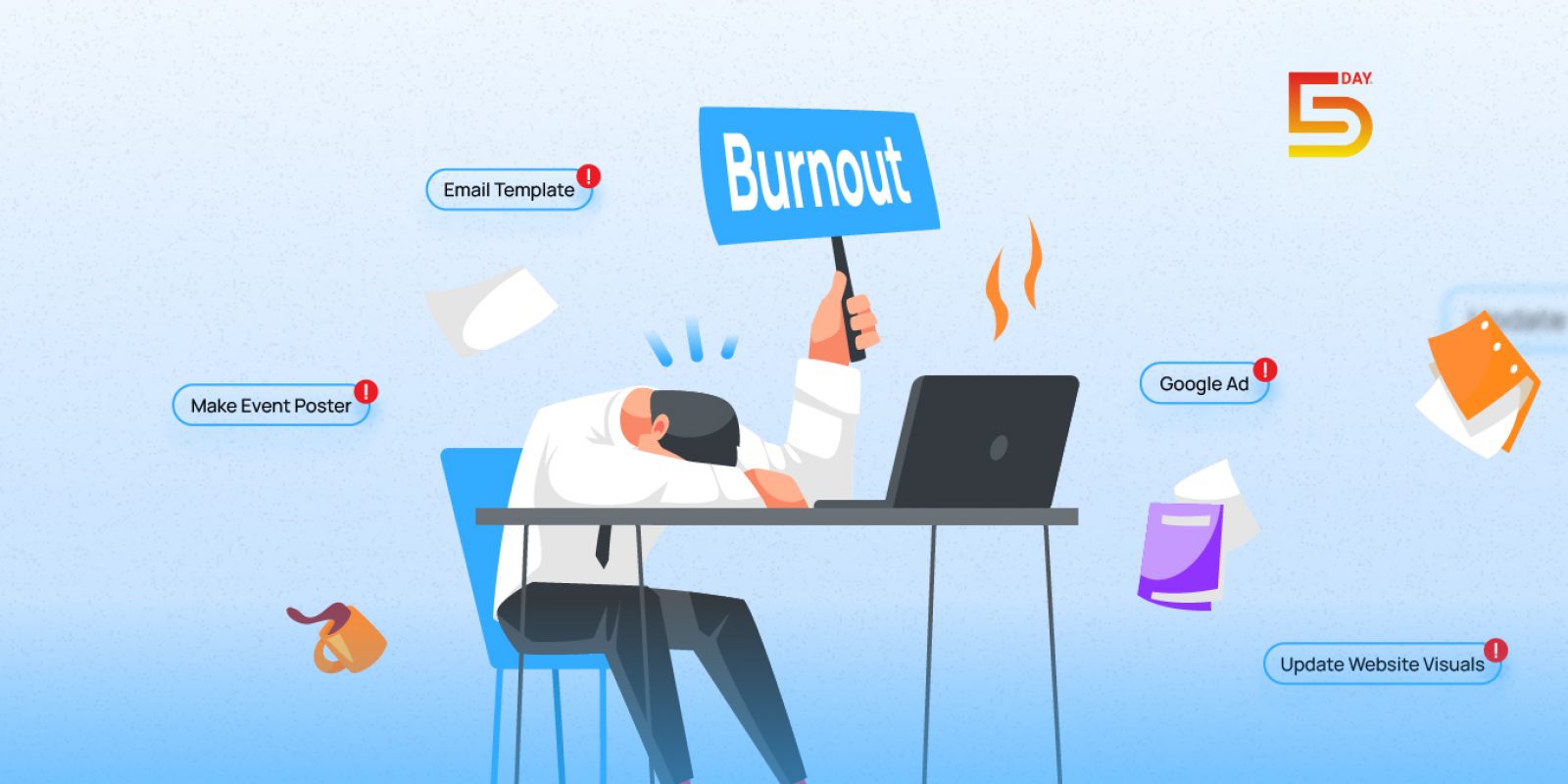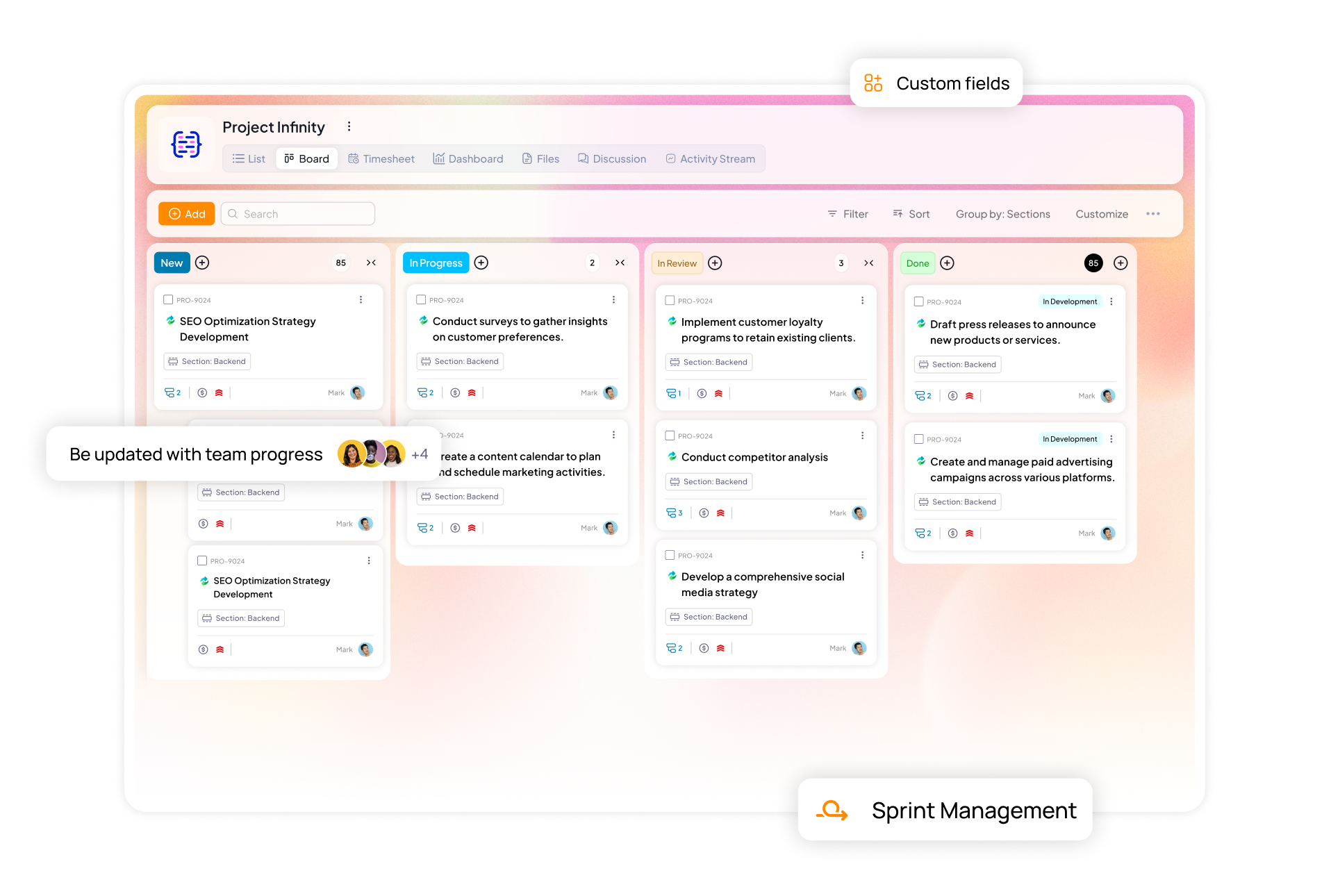Growth rarely starts with scale. It starts with clarity and courage.
Especially when most of the project managers juggle between 2-5 projects at a time, clarity is paramount. Because without clarity, everything is likely to go sideways and project managers are often left we unhappy teams and lack of trust from clients.
To avoid that, project managers need a visual guide, that helps them follow a logical project path. Work breakdown structure helps you do just that.
This article will give you an overview of the work breakdown structure and how to create one for your project. Let’s get right into it.
What is a work breakdown structure (WBS) in project management?
Workflow breakdown structure or WBS is a visual breakdown system to manage complex work easily. It is essentially a collection of all the steps that need to be done in order to complete a project successfully.
It is mostly created during the early phases of a project, before the project execution begins. The WBS focuses on outcomes rather than just activities.
Why use a work breakdown structure?
In complex, outcome-driven environments, a work breakdown structure (WBS) helps project leaders streamline planning and precision in execution. By translating strategic goals into structured work elements, WBS becomes a cornerstone for predictable delivery. Some other benefits of using WBS are:
- Converts high-level objectives into actionable tasks so every team member understands their responsibilities
- Sets realistic timelines and pinpoint task dependencies with greater ease
- Breaks down complex activities to create clarity and minimize overlap
- Helps track progress proactively and maintain alignment
Key components of WBS in project management
All elements of a work breakdown structure (WBS) have a different function and importance. They structure the project and make it more well-defined. The WBS follows a top-down structure; as you move from the highest to the lowest level, the breakdown becomes more detailed.
For instance, the highest level defines the end goals and scope of the project. As you move below, the phases are broken down into more specific details.
The key elements of WBS include the following
Levels
The levels provide a bird’s eye view of the entire project. This helps you understand the project scope, object, key phases, and stakeholders involved.
Phases
The phases represent all the significant stages of the project. They help in sequencing project activities logically, which allows the teams to focus on one phase at a time, resulting in improved efficiency.
Components/Tasks
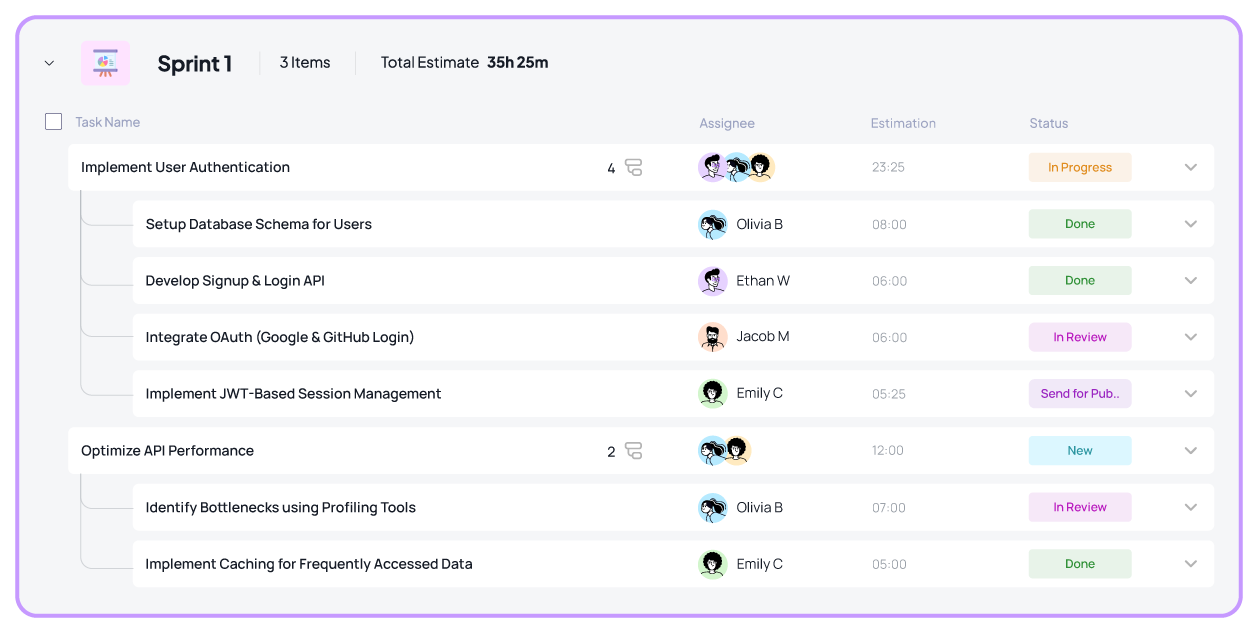
Project components are tasks within each phase of WBS. These tasks are at an intermediary level in the work breakdown structure. They are not as broad as project phases. Tasks usually cover all critical aspects of the project along with resource allocation.
Sub-components/Sub-tasks
Subtasks are a project’s most specific and actionable work items. They are a breakdown of tasks into step-by-step actions that need to be performed to complete the project successfully. The sub-components help track progress in detail and reduce the complexity.
Milestones
The project milestones serve as the landmarks in a project to monitor progress and that everything is where it should be on time. They mark when an important phase, task, or deliverable is done.
Keep in mind that the milestones themselves are not the tasks but rather the pointers marking the end of the critical phases. They assist the team in measuring progress and identifying where tasks are within the project schedule.
Deliverables
The deliverables are a project’s output or results that can be reviewed and validated. These are the documents, designs, software features, or final products that demonstrate the progress and completion of a project.
Work Packages
A work package is a group of related tasks within a project that are bundled and assigned to a person or team. Each work package is a manageable unit of work that fits within the overall project scope and timeline.
Dependencies
Dependencies define the order in which tasks are executed. They represent the relationship between functions. Some tasks cannot be performed independently until other tasks are completed either because of logical, technical, external, or resource constraints. Managing dependencies keeps the project on track.
Estimates
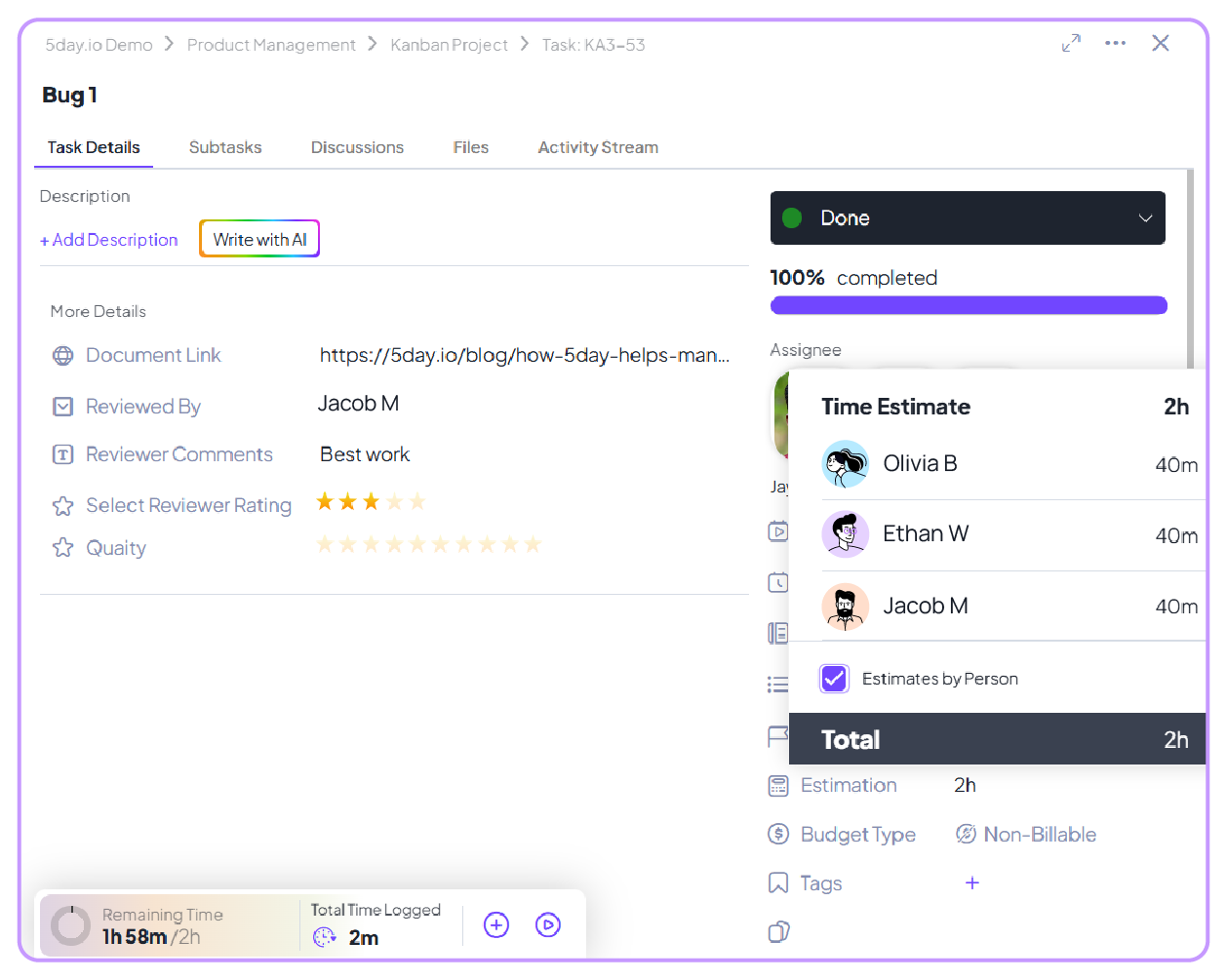
An estimate indicates the predicted time and cost to deliver each deliverable within a project. This is helpful for a project manager in planning their resources effectively. The estimates act as a baseline for project monitoring so project managers can track actual progress against planned costs and timelines.
Types of work breakdown structure
You can structure your project in multiple ways. The selection depends upon the nature and requirements of the project. Let’s see three ways you can organize your work breakdown structure.
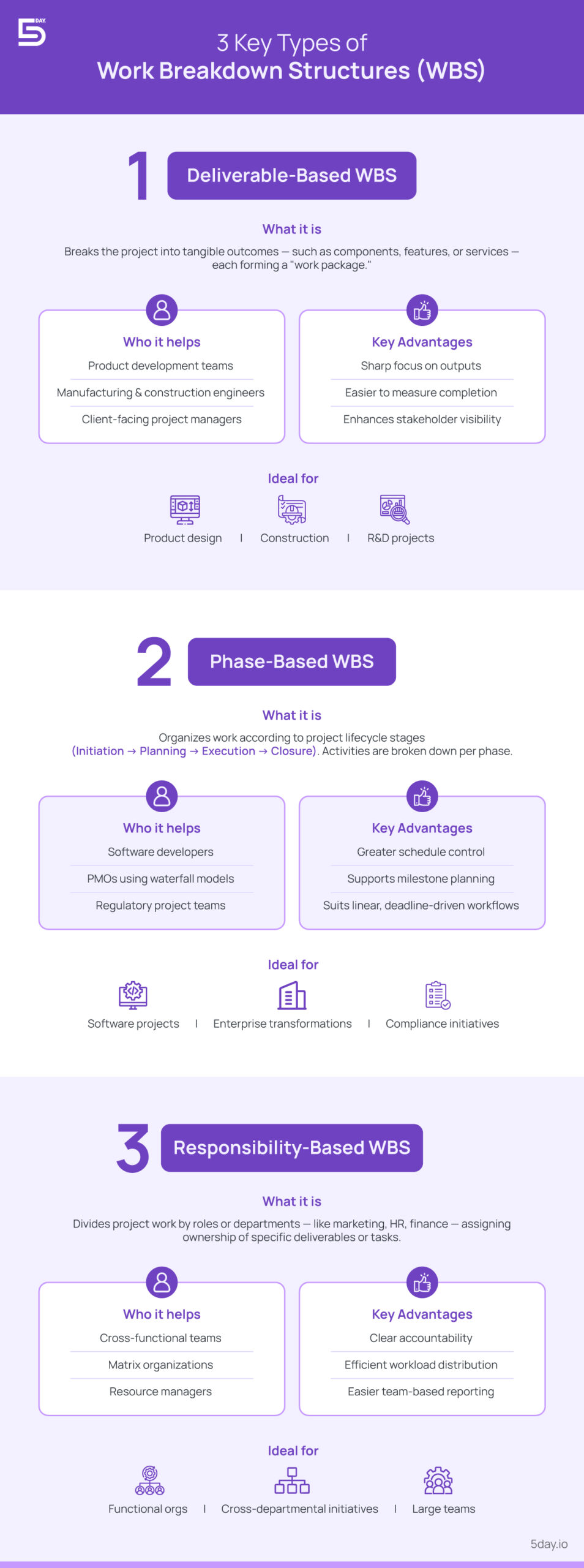
Deliverable-based WBS
Main focus: What needs to be produced?
A Deliverable-Based WBS breaks down a project by the outcomes it must achieve. The “what” is focused rather than the “how” or “when.”
Rather than starting with activities or timelines, this model identifies each tangible or verifiable deliverable. From there, you work backward to determine the tasks needed to create it. It’s especially useful in client-driven environments where progress is tracked by completed outputs.
Phase-based WBS
Main focus: When does work happen?
A Phase-Based WBS breaks the project along its timeline or lifecycle stages like planning, execution, and delivery and then maps the work within each phase.
This structure mirrors traditional project management methodologies, particularly Waterfall. It provides a temporal logic to the project, ideal when activities are sequential and need clear checkpoints for tracking.
Responsibility-based WBS
Main focus: Who is doing the work?
A Responsibility-Based WBS organizes project tasks based on departments or individuals responsible for them. It’s designed around accountability and ownership, not necessarily the order or outcome of the task.
This model provides role-based clarity, especially in matrix organizations where several departments contribute to a project.
How to create a work breakdown structure?
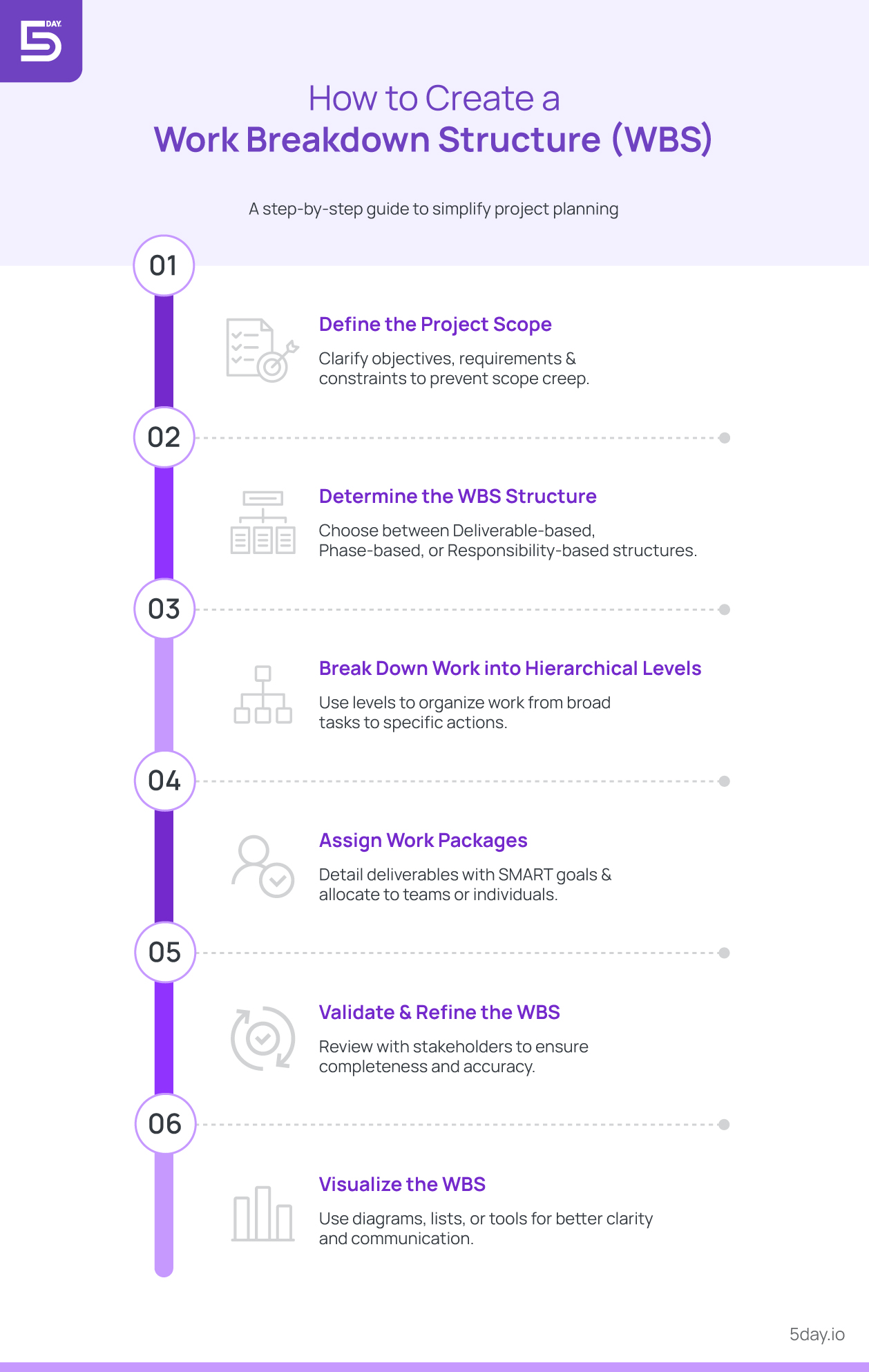
Here’s a step by step approach on how to create a WBS structure:
1. Define the project scope
Start with a clear understanding of what the project aims to achieve. Outline the key objectives, major deliverables, constraints, and success factors. Engage stakeholders early to align expectations and avoid scope creep later. A well-defined project scope forms the foundation of an effective WBS.
2. Choose the right WBS structure
Select a structure that aligns with your project’s nature:
- Deliverable-Based: Focuses on tangible outcomes.
- Phase-Based: Aligns with lifecycle stages like planning, execution, closure.
- Responsibility-Based: Assigns tasks by team or function.
Match the structure to your project’s complexity, dependencies, period, scope, and workflow.
3. Break down the work into hierarchical levels
Organize the project into levels of detail, starting from broad deliverables or phases down to actionable tasks. This hierarchy creates a roadmap that improves task ownership and visibility along with a clear task sequence.
- Typical levels might include:
- Level 1: Project Title
- Level 2: Major Deliverables or Phases
- Level 3: Sub-deliverables
- Level 4: Work Packages
4. Assign work packages
Make sure each work package is specific, time-bound, and measurable. Use the SMART framework to define timelines and resources. Assign each package to a responsible individual or team, to get utmost clarity in execution.
5. Validate and refine the WBS
WBS is not a one-shot effort. It is vital to review it collaboratively with key stakeholders to validate accuracy and feasibility. All necessary work should be captured and structured logically, where a second opinion really helps catch small but important steps that might’ve been missed.
6. Visualize the WBS
Translate your WBS into a visual format for better communication. Here are some features in a project management software that help:
- Tree Diagram/Flowchart: Best for showing relationships and task progression.
- Hierarchical List: Ideal for clear outline-style views.
Visualizing the WBS helps teams and stakeholders quickly understand the structure and track progress effectively.
Examples of a work breakdown structure
Let’s see a real scenario of how a complex project translates into structured, manageable tasks using WBS
Level 1: Project Phase | Level 2: Key Activities | Level 3: Sub-Tasks / Deliverables |
1. Planning | Define goals & requirements | – Set project goal (increase sales by 25%) – Outline key features – Identify stakeholders – Build 12-week timeline |
2. Design | Research & wireframe | – Study competitors’ sites – Gather UI/UX inspirations |
| Create mockups | – Design homepage and product page wireframes – Build high-fidelity mockups |
| Review & finalize | – Share with stakeholders – Implement feedback |
3. Development | Frontend build | – Code UI using HTML, CSS, JS – Ensure mobile responsiveness |
| Backend build | – Develop logic for cart, login, order system – Set up secure database |
| Integrate systems | – Add payment gateway (e.g., Stripe) – Link to email marketing tools |
4. Testing & Deployment | QA testing | – Test checkout, login, cart flow – Identify and fix bugs |
| Client review | – Present final version to company founder |
| Launch website | – Deploy on server – Open to customers |
How can 5day.io help in executing your work breakdown structure?
5day.io helps project leaders’ power real execution across departments. The platform transforms your static WBS visualized on a whiteboard into a collaborative, real-time workspace.
Once your WBS is set up, 5day.io allows you to:
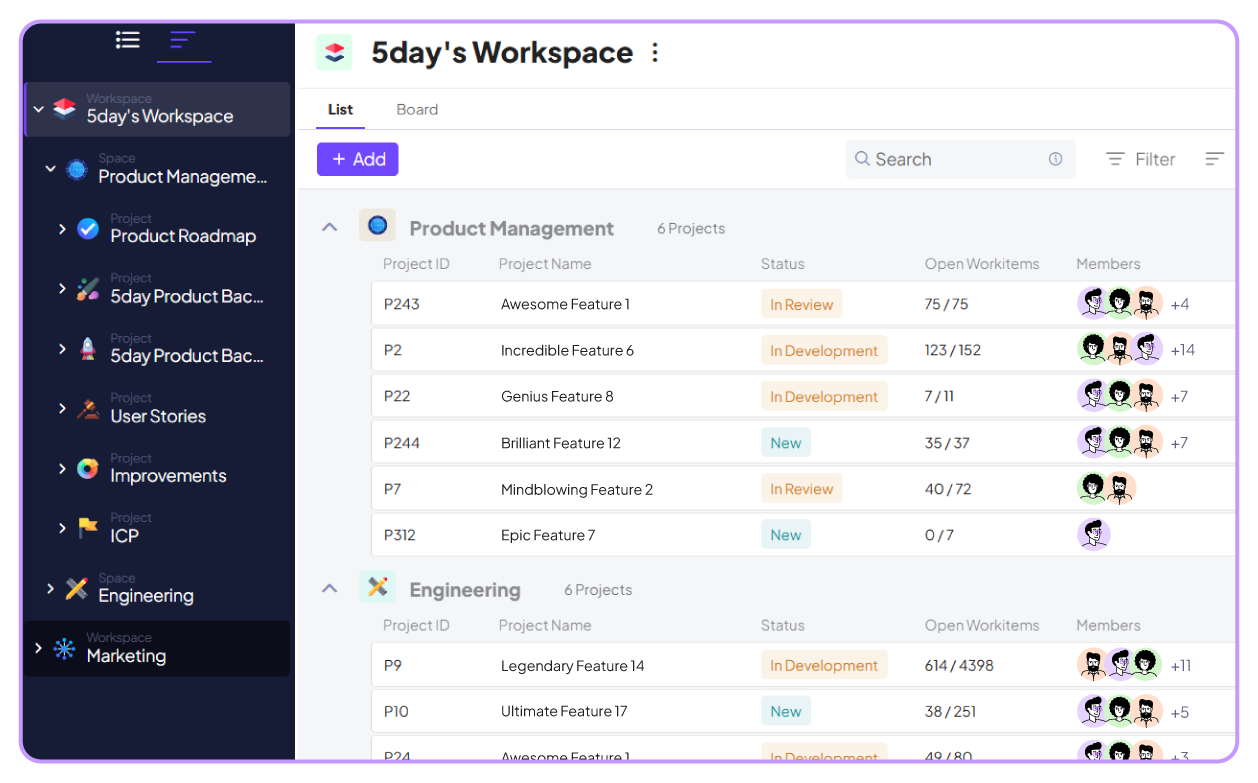
- Map tasks and phases directly from your WBS into the same hierarchy
- Assign clear ownership and deadlines at every level
- Define task dependencies to reflect logical flow and avoid blockers
For companies managing 100–500 team members, collaboration often turns chaotic. 5day.io brings order with:
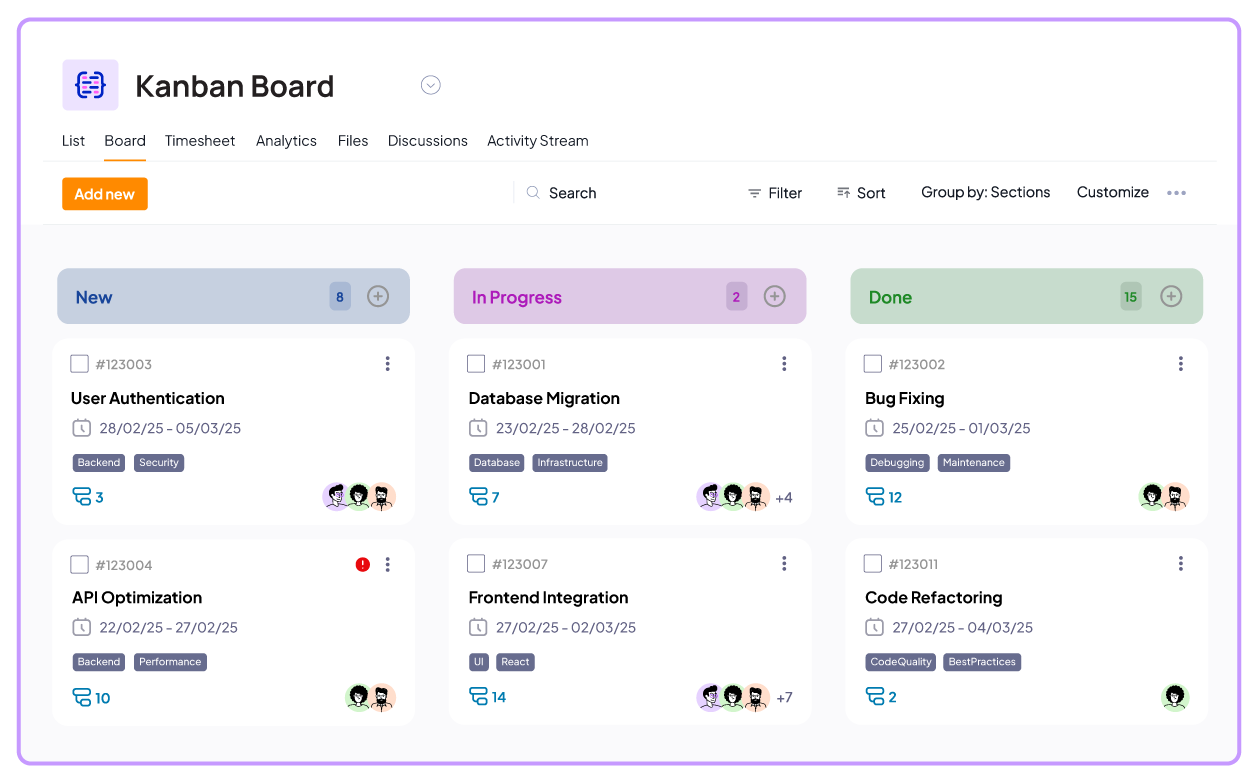
- Centralized task views like Kanban and List
- Instant notification, file attachments, and conversations within each task
- Role-based access, so every team sees only what’s relevant to them
Helps you understand estimation, effort, progress, and performance with features like:
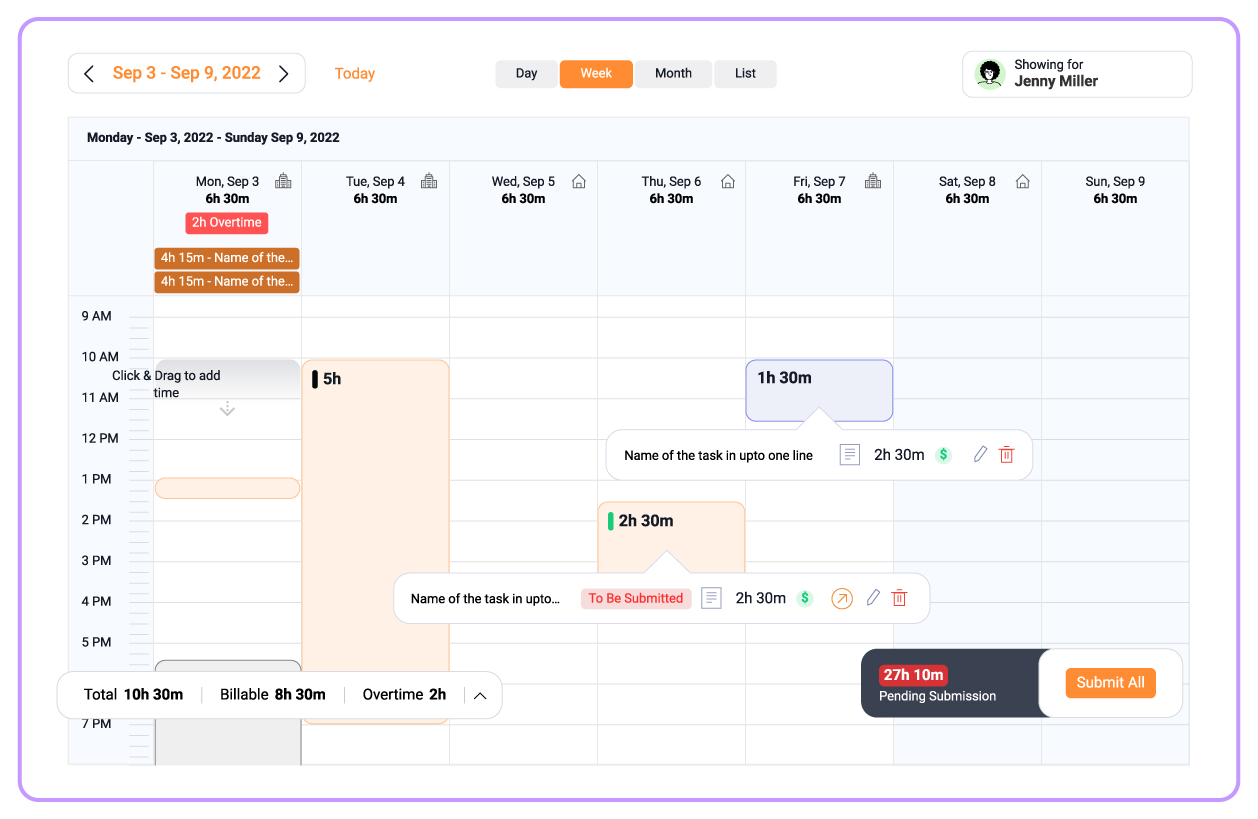
- Track time per task or phase directly within the platform
- Generate estimation vs time spent for stakeholders or retrospectives
- View progress dashboards linked to your project metrics
Want to turn your WBS plan into a living, breathing workspace that helps you deliver projects without friction? Try 5day.io for completely free.
3 month trial | No credit card needed
Frequently Asked Questions
What is the difference between a work breakdown structure and a project schedule?
A WBS outlines what work needs to be accomplished by breaking down the project scope into deliverables and tasks. A project schedule focuses on when and how these tasks will be executed, detailing timelines and sequencing.
How detailed should the work breakdown structure be?
A WBS should be detailed enough to assign tasks and monitor progress effectively. However, overcomplicating it can lead to confusion and chaos in managing the project. The level of detail often depends on the project’s size, complexity, type, and stakeholder requirements.
At what stage should a WBS be created during the project?
Typically a WBS is created during the start of the project. Although, it should be constantly updated and monitored throughout the project.
How does WBS help with risk management?
WBS helps identify potential risk points early by breaking down work into specific, visible tasks. This allows teams to assess complexity, flag high-risk components, allocate buffers and prepare contingency plans.
